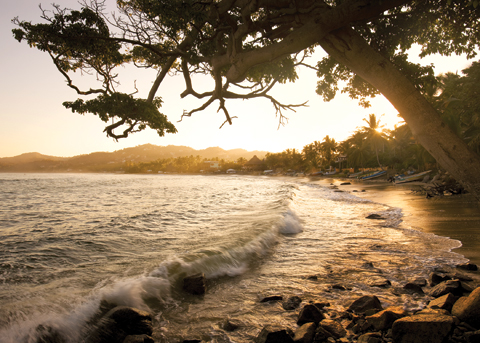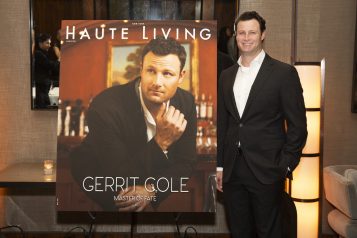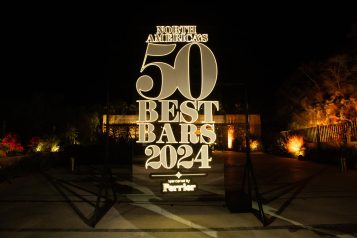The detailed list of methods he is using to sustain his island is endless.
“My original objective in life was to get a good education and make some money so that I could be independent,” says Richard Evanson, owner and managing director of Turtle Island resort in Fiji.
Mission accomplished.
He satisfied the good education requirement with an engineering degree from the University of Washington and an M.B.A. from Harvard. Next on the agenda was earning a little cash. That item got crossed off the to-do list when Evanson moved on from his career at Boeing and ventured into cable television. Along with some fellow Harvard grads, Evanson built up a cable company in western Washington that became successful enough to sell to CBS in 1972. “Cable television was in its infancy in those years,” says Evanson. “We introduced a lot of new concepts that are still in play today. The success of that cable company allowed me to build enough personal funds so that I didn’t have to worry about finances anymore.”
Not worrying about finances led Evanson to life in the 1970s fast lane. He moved from Seattle to San Francisco and inaugurated his first week in the city with an elaborate Saturday outing. As a guest of San Francisco Mayor Joseph Alioto and Bank of America executives, Evanson boarded a private helicopter to soar above the Golden Gate Bridge and land in the Pacific Ocean on the flight deck of the USS Enterprise. “What a welcome!” exclaims Evanson.
Eventually the glitz and glam of the luxury lifestyle lost its luster, and in his early 30s, Evanson hopped on a plane bound for Australia in search of profitable investment opportunities. But a two-day layover in Fiji turned his quest for his next business venture into a lifelong mission of living a quality life as a good steward to the earth, and managing one of the most romantic resort getaways in the world.
Today it is called Turtle Island, but, in 1973, it was an uninhabited, 500-acre island destroyed by goats. Even so, it captured the heart of the American millionaire like no love interest could previously claim. “I bought the island because I was searching for a different kind of fulfillment,” he explains, “I wanted to put some meaning back into my life.”
Evanson went from living in a luxury apartment in Ghirardelli Square to constructing his own $200 hut with no running water or electricity. He began restoring the island, and in turn, restoring his own sense of purpose. Corn, beans, cucumbers, and radishes replaced the caviar and champagne, and living by lantern light, waking with the roosters, catching fish, and eating from his garden, meant that Evanson was now 100 percent self-sufficient-a luxury he had never known before.
The evolution of the one-man island into the No. 1 honeymoon destination in the world came about with the help of Hollywood. Columbia Pictures discovered Evanson and his private paradise on a scouting trip in 1979. After scouring the globe, it was clear that Evanson’s island was the ideal locale to serve as the set for the Oscar-nominated film, The Blue Lagoon. After more than five years in isolation, Evanson welcomed the cast and crew by building accommodations for the 80-person team. Filming took place during a six-month period, and when it drew to a close in October, Evanson cleverly went about transforming the empty cottages into guest suites for what would become his new resort getaway.
Turtle Island greeted its first international guests on January 1, 1980. When The Blue Lagoon released in theaters in the summer of that same year, occupancy rates for the 14-cottage resort hit the roof and, in the past 29 years, have rarely dipped.
Today the exclusive Fijian island is dubbed in luxury travel guides like Conde Nast Traveler as “hyper-romantic,” as it caters mainly to a couples-only clientele (more than 50 percent of guests are honeymooners). Perhaps it is the island’s ability to offer the perfect blend of luxury and privacy that has attracted a plethora of celebrity names including Charlize Theron, Dennis Quaid, Ringo Starr, and Rob Lowe. Most recently, Senator John McCain escaped to the paradise island in December, 2008, following the exhausting 18-month presidential campaign.
Luxury leisure activities that have earned Turtle Island recognition on “Lifestyles of the Rich & Famous” and a listing on Andrew Harper’s “Most Romantic Hideaway Resorts,” include traditional Fijian wedding ceremonies, French champagne and lobster picnics on one of the island’s private beaches, sunrise horseback riding, and complimentary “Lomi-Lomi” healing massages using techniques that have been handed down through generations of Hawaiian families.
The enchantment of the two-room villas on the private island retreat includes verandas furnished with queen-size daybeds, perfect for an afternoon with a good book, walk-in double and outdoor showers, and private hot tubs.
But even more impressive than the romantic details that Evanson has incorporated into each cottage are the efforts that he has invested in Turtle Island’s ecosystem.
He has planted more than 500,000 trees since first setting sights on the island more than 30 years ago, transforming what was once a rough terrain into a lush, tropical forest. In the last year alone, he, along with the help of the Fijian people, have planted 68,000 Mahogany trees. He has built a hydroponic and organic vegetable garden with 140 beds that encompasses four acres and supplies 80 percent of the fresh produce to guests and staff year round. “We’re very self-sufficient in our food requirements,” explains Evanson. “We have a staff here of about 50, and at full occupancy we feed around 30 guests. So it’s very satisfying to be able to provide your own food-both the vegetables and the seafood, because we also fish everyday.”
Turtle Island has been the proud recipient of more than six international ecotourism awards, not only for their garden, forest, and fishing efforts, but also for Evanson’s innovative “hot room.” He is eco-conscious in employing the use of solar panels and wind power, but he does admit to needing a generator to produce some of the electricity for the island. But since Evanson left the wasteful lifestyle by the wayside, he ensures the excess heat produced by the generator is not wasted and uses it to dry clothes, heat water, and dry timber.
Ask Evanson about his ecotourism projects and it becomes evident that it is a subject that excites him to the core. The detailed list of methods he is using to sustain his island is endless. From building a dam that holds more than five million gallons of water, to composting and soil erosion projects, it is clear that Evanson has found the much-needed purpose he was so desperately seeking. “I’ve been recognized by many environmental organizations and government agencies because we are consistently conserving what resources we have and constantly developing new resources that are nature-based,” he says proudly. “I find it a great challenge, with great satisfaction, when we do it successfully. And when you work so hard at something, and then the guests come along and admire it, that is a huge reward.”
Turtle Island U.S. Office
800.255.4347
www.turtlefiji.com





















